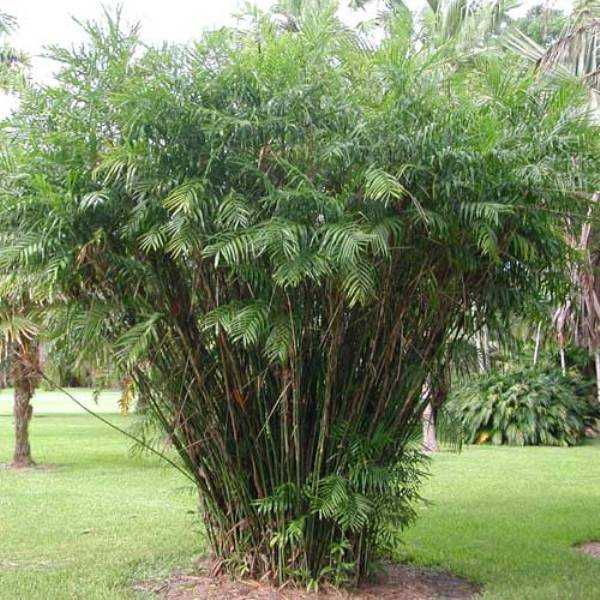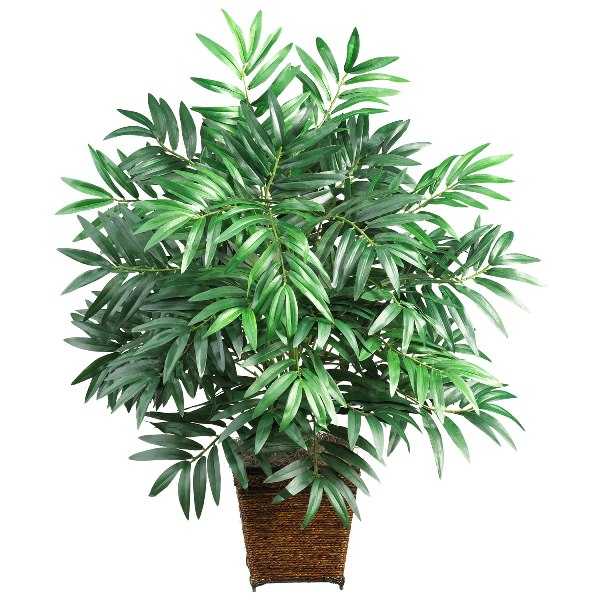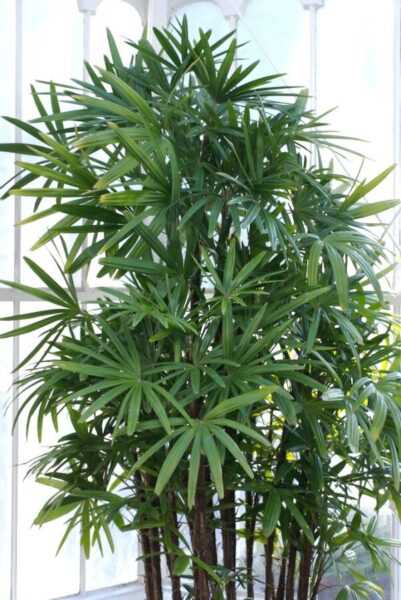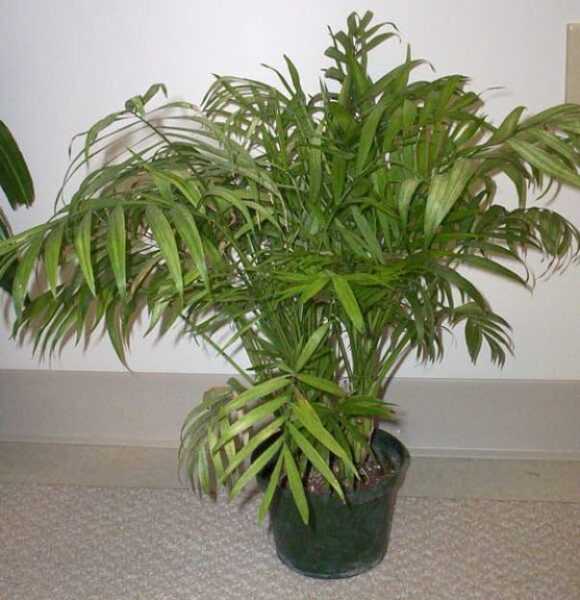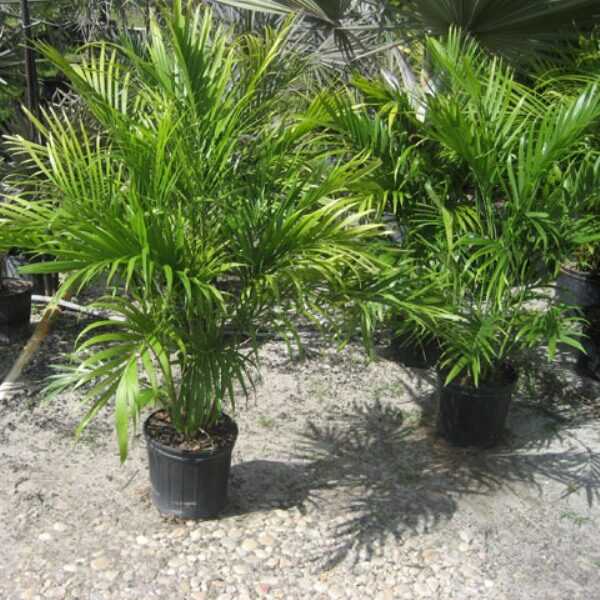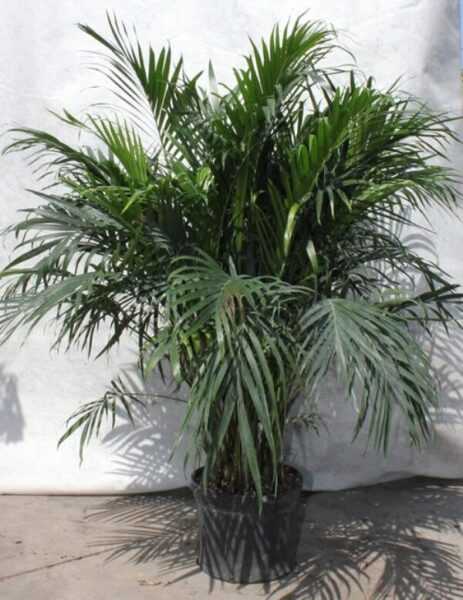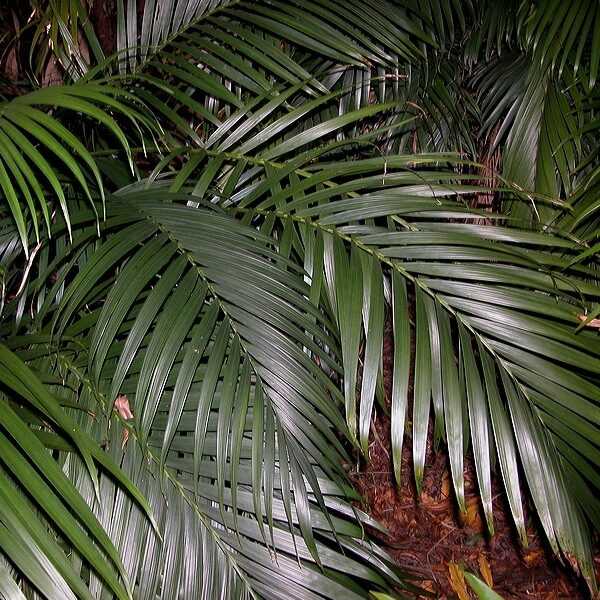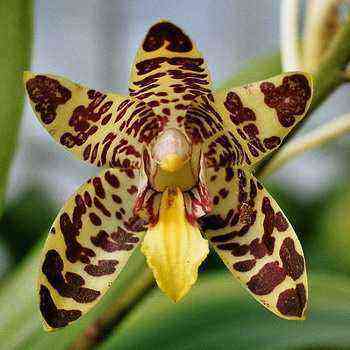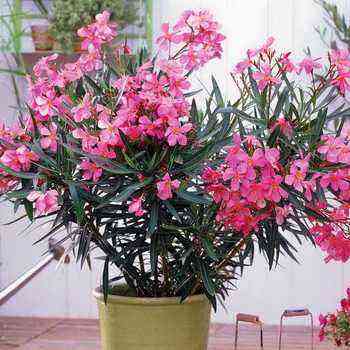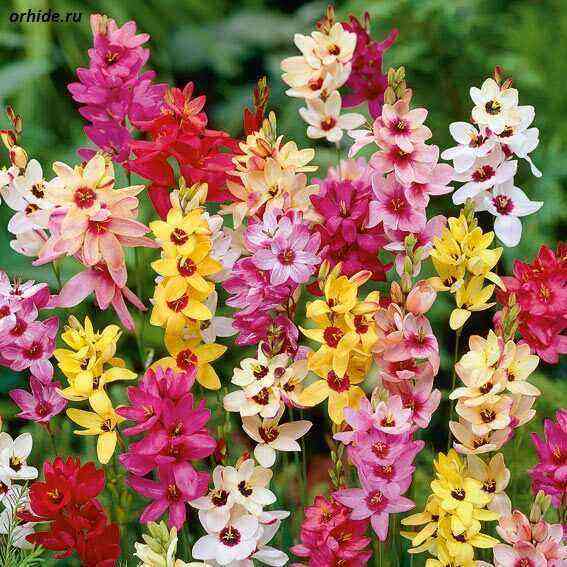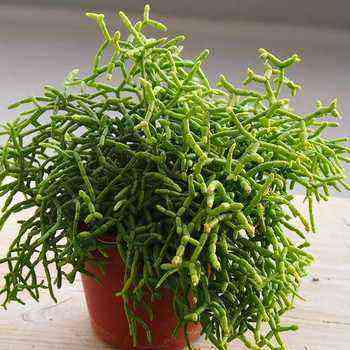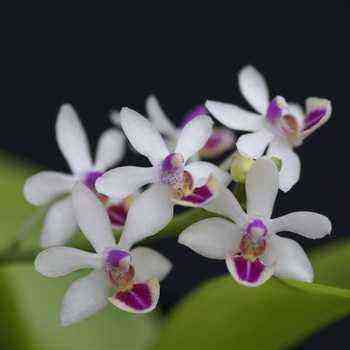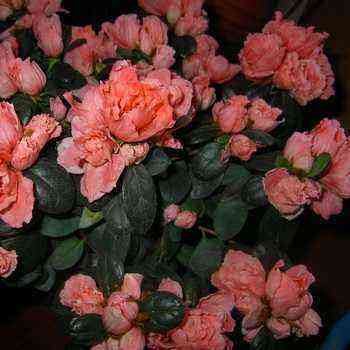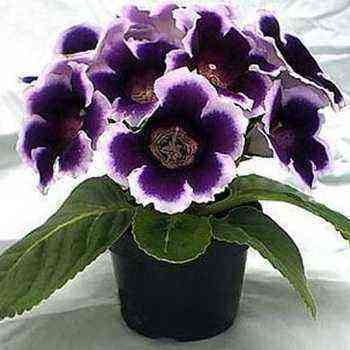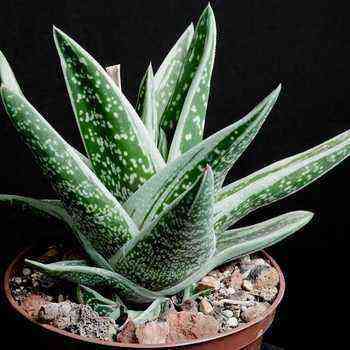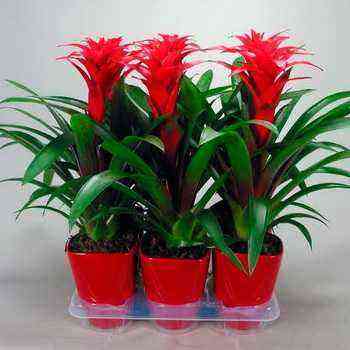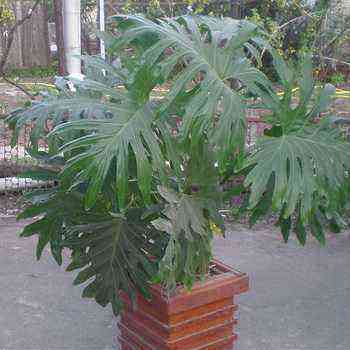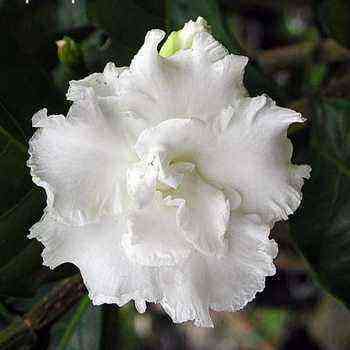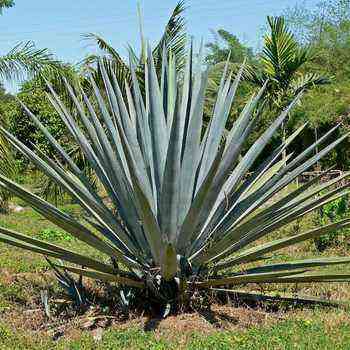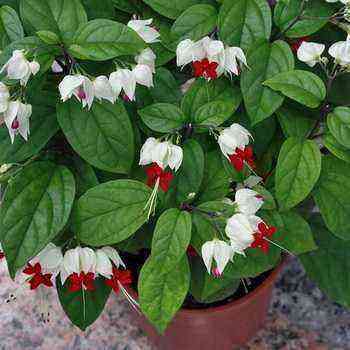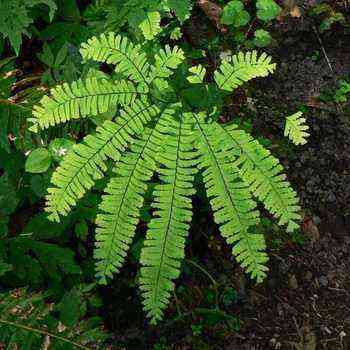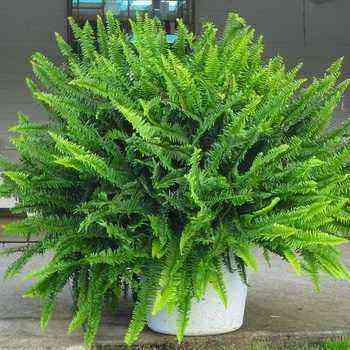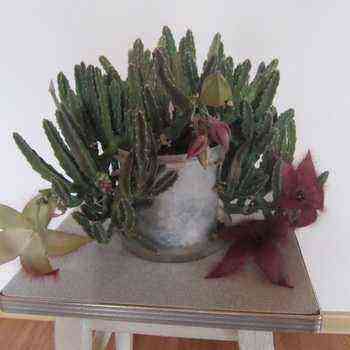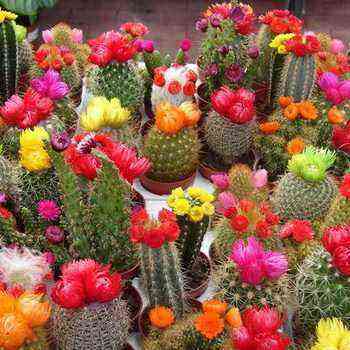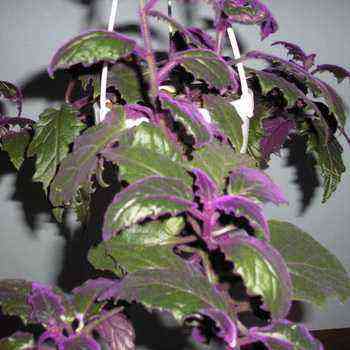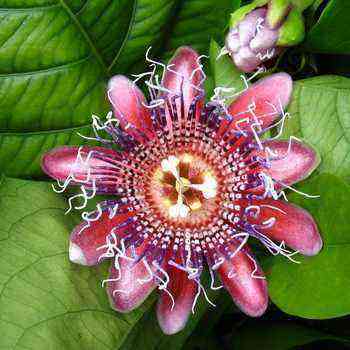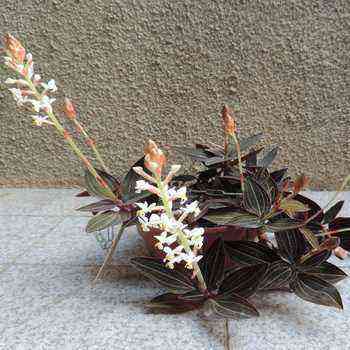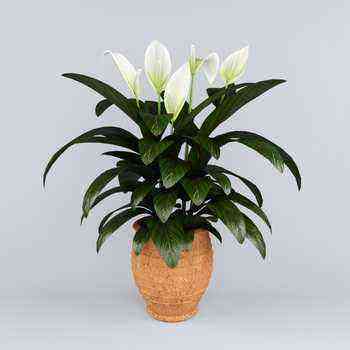Indoor flowers chamedorea palm (Chamaedorea) is often used in the design of residential and office premises. It is a graceful, slender plant that not only enriches the surrounding air with oxygen and absorbs harmful carbon dioxide. The chamedorea palm is an amazingly elegant plant that makes an excellent compositional backdrop for other indoor flowers. A genus of over 100 species of palm trees native to the subtropics and tropics of the Americas. The uniqueness and attractiveness of palms in their contrast, each of the varieties has its own bright, unique appearance. For example, they can be miniature (about 24-35 cm) or huge (up to 12 meters and more), with a thin miniature trunk or wide and powerful. But all as one leaves of any species have a feathery shape.
Description of hamedorea palm tree with photo
All the leaves of the Hamedorea palm are feather-shaped – that is, the central trunk, from which small leaves extend from the stalk. And there are leaves, as if attached to the trunk. It should also be noted that the width of the leaves is variable, they can be thin and wide. Can be arranged in bunches like bouquets or widely spaced. But in any of the species, the size of the leaves varies from 30 cm to 2,5 meters. The shape of the arrangement of the leaves is fluffy (leaves extend from the cuttings on each side) and fan (the leaf comes from the root of the stem).
According to the description, the trunk of the Hamedorea palm tree does not have to be one, you can often find varieties with 3 or more trunks (they are called multichannel trunks).
Botanists have such a term “crown”, which can be talked about if the leaves are feathery. They are thin tubular structures located near stems and leaves. They can be located on the entire surface of the trunk, but they can only on its part. When removing leaves, you can also remove it with the rest of the foliage. Crowns can be seen on all palms, including this flower, they have a green color and a smooth surface (by the way, on other palms they can be absolutely any color). We offer you a photo of a chamedorea palm tree:
Without exception, all the palm trees of Hamedorea are dioecious. This means that any sprout can be either male or female and requires pollination. The characteristics of the male and female flower are different, which makes the sex of any of them possible with almost no mistakes.
Male flowers: more branched; distribute pollen that is capable of fertilizing seeds in a female plant (wind, insects, or proximity to a flower). Women’s flowers are not so branchy.
Flowers are formed on the trunks of the plant – they are either attached to it, or are located among the base of the leaves. They have a bright color, most often orange, black and red. After pollination, the seeds need from three months to six months to form and receive seeds of various flowers. The volume of seeds is variable, but usually it does not go beyond the limits of 12-20 mm.
It is difficult to talk about the size of the trunk, since it can vary greatly depending on the specific variety and species. As a rule, they are all green in color and rings along the entire length of the trunk (they appear in the place of the removed leaves). Basically, they are all upright, although when ripe they can bend slightly, and over time they can even become lying down (especially noticeable in varieties with thin stems).
Appreciate the beauty of the chamedorea indoor palm tree in the photo:
Home care for Hamedorea
The chamedorea palm tree at home prefers diffused light, but it will be grateful to you if you place it in a warm, sunny place for two to three hours a day (for a start, it is worth starting with an hour or 30 minutes, and only after you make sure that that the flower is not damaged, you can increase the time of sunbathing). There are varieties that can safely stay in the sun around the clock – Chamaedorea Plumosa, Chamaedorea glaucifolia, Chamaedorea radicalis and Chamaedorea benzei. Sun tolerant – Chamaedorea costaricana, but without high humidity.
The soil should be rich in organic matter – it is possible to saturate it with the addition of pumice, coarse sand, spruce sawdust, decomposed granite and compost (try bark, but it really rots too quickly). Don’t forget good drainage.
Caring for chamedorea consists in proper soil farming and timely watering. A palm tree needs a lot of water, but moist soil is definitely not for it. Three waterings per week with good drainage will be enough. Watch the quality of the water, liquid with the addition of salts and minerals can burn the flower and destroy it.
Constant air circulation is also important for the normal growth and development of Hamedorea; a lack of it in the house can lead to the appearance of insects and especially a spider mite.
Do not forget to periodically cut off wilted, old leaves that have lost their picturesque appearance. The leaves are removed from the bottom up. Removing fresh, healthy leaves can kill other growths on the crown.
The most ideal time for transplanting is spring (March-April). Like all other types of palm trees, Hamedorea needs to be transplanted while maintaining an earthen coma – adults every three years, young ones every year. In order for the flower to fit into a new pot, you should cut off the felt layer of the roots with a very sharp knife. The soil level before and after transplanting should remain the same
The Hamedorea palm tree needs additional nourishment more than other palms for home care, so we recommend that you choose for yourself fertilizers in granules that are slowly released. The procedure should be carried out once a month.
The chamedorea indoor flower can also reproduce with the help of seeds (be careful, they quickly lose germination – about 10% every month). Plant them immediately after purchase. Soak the seeds in water for a week and remove the pulp, then remove the hard shell. Now you need disposable cups and a ready-made potting mix – fill each of the cups with it and pour it to the edge. One glass – one seed. Wrap all glasses in plastic and keep them humid.
In the process of growth and development, the following conditions should be provided for the sprouts: temperature not lower than 25 ̊С, high humidity, airing once a day, bright diffused light. If all the conditions are met, after six months the palm tree will begin to sprout. When the sprout reaches 3-4 cm in size, it should be transplanted into a pot with a substrate for an adult plant.
Hamedorea Elegance variety
The homeland of Hamedorea Elegance is the rainforests of southern Mexico and Guatemala. It is also grown in gardens in the southeastern United States and tropical areas. It is very often cultivated as a houseplant, which can reach a height of two meters.
This variety has been very well known for a long time in the plant trade. Known for its small size, it is the only barrel to have a miniature crown, making it popular with buyers. For commercial purposes, growers plant several plants in one pot at once, which makes it more lush.
The trunk has a diameter of 12 mm, and the leaves rarely grow more than 65 cm. Old trunks can grow up to 120-150 cm. Probably the only drawback of this palm tree is that it grows very slowly. It will be very easy to grow both in the garden and in the house – it loves diffused light and can withstand temperatures down to -7 ̊С, although it prefers bright reflected light and high humidity.
